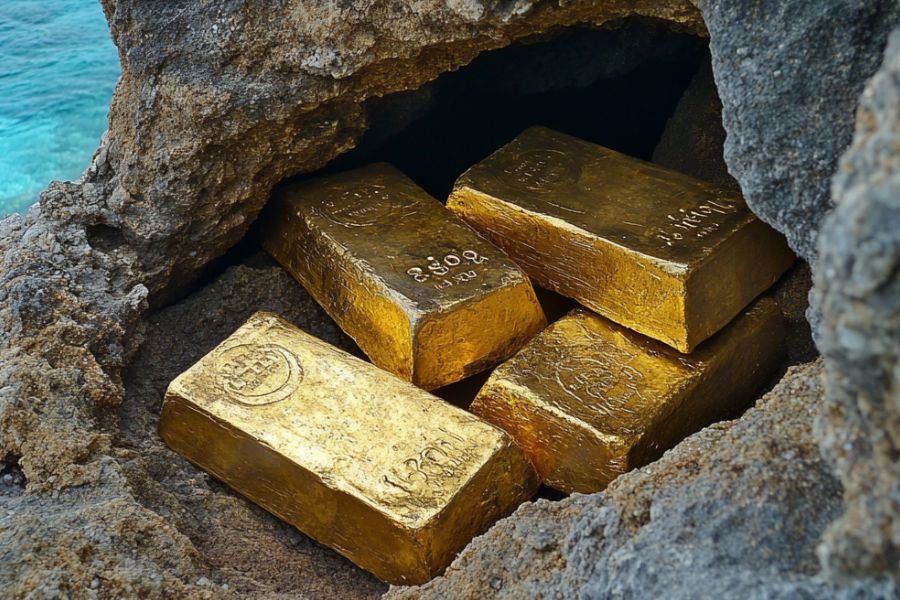Maine’s woods and waters hold secrets older than your grandparents’ stories. From forgotten pirate gold to chests buried by settlers, this state has whispers of hidden riches waiting to be found.
Some say these treasures could be worth millions, tucked under mossy rocks or hidden in old ghost towns you’ve probably driven past without knowing.
People just like us have stumbled on treasures before, like the logger who found a river full of ancient coins near Penobscot.
Our coastlines and forests are packed with clues. Maybe you’ll find smuggler’s gems near Portage Lake or uncover a rusty key that unlocks a mystery. Even if you don’t strike it rich, searching lets you walk in the footsteps of adventurers who shaped Maine’s wild past.
So next time you’re out hiking or poking around an old cellar hole, keep your eyes open. Who knows? The next legendary treasure might have your name on it.
Maine’s Hidden Treasures Waiting to Be Found
Explore these incredible and intriguing treasures that are still hidden across the state:
Dixie Bull’s Treasure on Damariscove Island – $500,000+
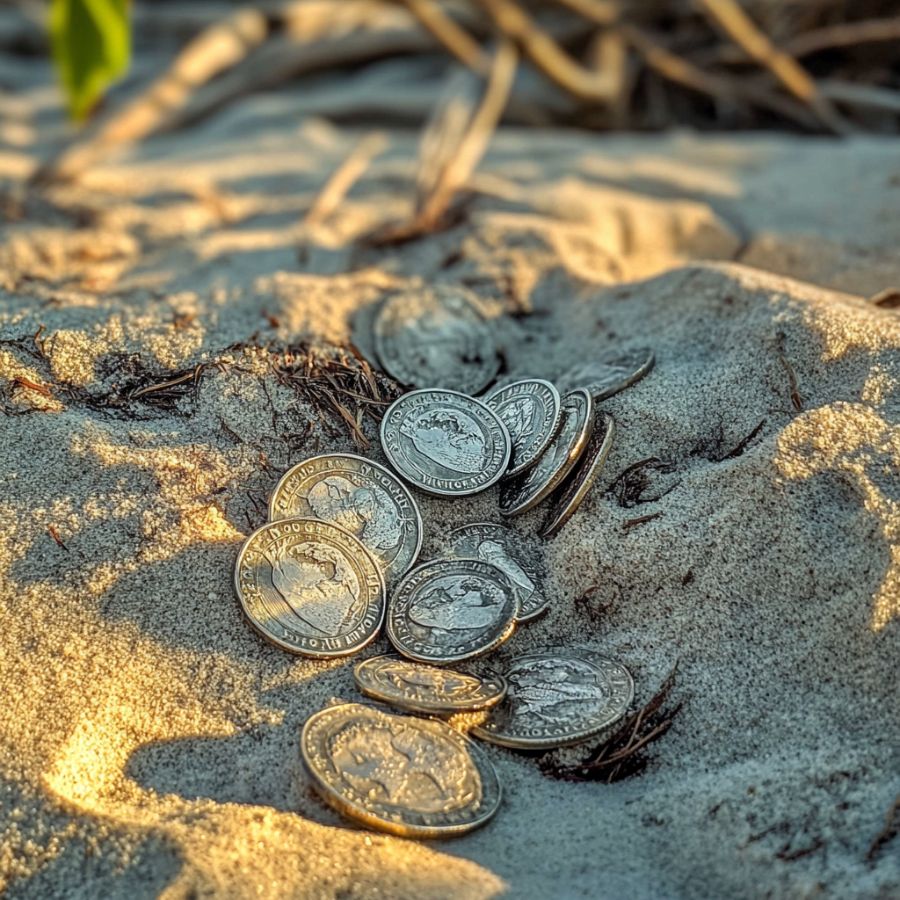
Dixie Bull began as a simple fur trader along Maine’s coast in the early 1630s. His life changed when French raiders stole his goods near Penobscot Bay, pushing him to gather a crew and seek revenge.
In 1632, he led New England’s first recorded pirate raid, attacking the English settlement at Pemaquid. Soldiers at the fort reported stolen tools, furs, and silver coins. Bull’s small ship likely retreated to Damariscove Island, a rocky hideout frequented by fishermen.
The island’s jagged cliffs and deep caves offered perfect spots to bury valuables quickly. Bull’s haul included trade goods from Pemaquid and possibly French loot.
After the raid, he vanished, leaving no clear records of his fate. Damariscove’s shifting sands and storms have hidden clues, but hunters still scan for rusted tools or old chests.
How much the treasure would be worth today
The stolen goods could now be valued at over $500,000, including rare 17th-century coins and furs.
Jewell Island’s Pirate Gold – $2,000,000+
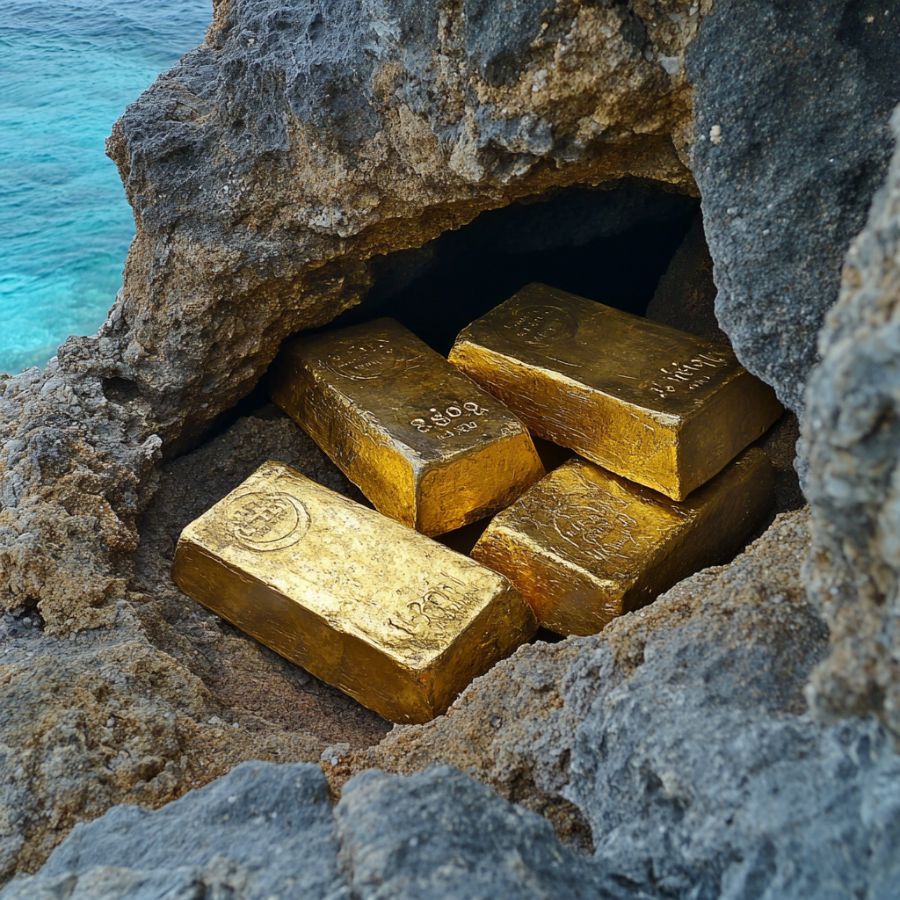
Jewell Island, just east of Portland, served as a pirate stopover during the 1690s. Captain William Kidd, a privateer turned outlaw, often sailed these waters. In 1699, authorities arrested Kidd for piracy after he hid gold and silk in the Caribbean.
Maine’s version of the story claims a wooden chest surfaced here in the 1850s, found by a farmer digging near a spruce tree. The chest had broken hinges and empty compartments, sparking debates about its past.
Kidd’s known treasures included Spanish coins and gold bars from Indian Ocean raids. Jewell Island’s maze of World War II tunnels and swampy ponds add layers to its mystery.
How much the treasure would be worth today
A full chest linked to Kidd might hold $2 million in gold and artifacts.
Baron de Saint-Castin’s Hidden Fortune – $12,000,000+

Jean-Vincent d’Abbadie de Saint-Castin arrived in Maine in 1665 as a teenage soldier. He later married a Penobscot chief’s daughter, gaining influence over fur trade routes.
By the 1670s, he controlled traffic along the Penobscot River, collecting taxes in silver coins from European ships.
When British forces threatened his fort in the 1680s, Saint-Castin buried sacks of coins near the Bagaduce River.
Farmers digging a well in 1842 uncovered 1,200 French and Spanish coins from the 1600s. The find, called the Castine Hoard, sold to collectors, but many coins stayed missing.
How much the treasure would be worth today
The remaining coins could total $12 million due to their age and origin.
Sir William Phips’ Sunken Treasure – $30,000,000+
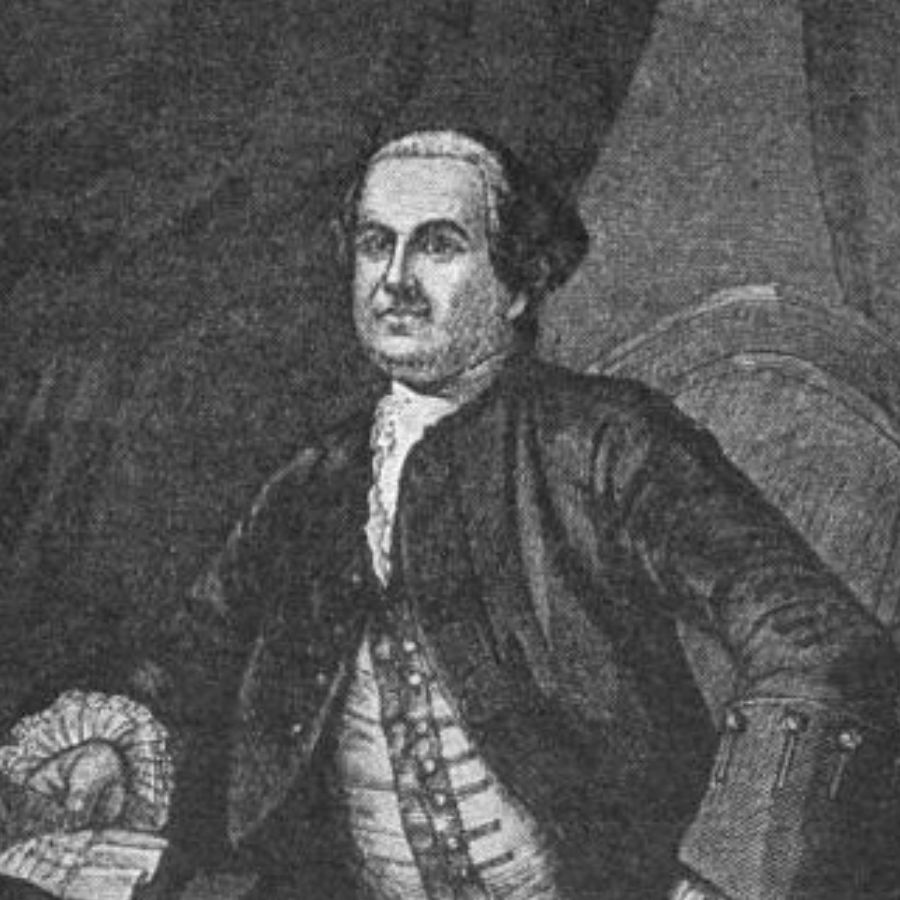
William Phips grew up poor near the Kennebec River before sailing to the Caribbean. In 1687, he recovered 34 tons of silver from a Spanish shipwreck, earning a fortune and knighthood.
Phips kept detailed maps of Maine’s coves, sparking rumors he hid Spanish silver here. Some accounts say he buried chests near Monhegan Island, where his family fished.
Phips died suddenly in 1695, taking any secrets to his grave. Divers recently found 1600s-era anchors nearby, but no treasure yet.
How much the treasure would be worth today
Undiscovered silver could exceed $30 million based on current metal prices.
The Pirate Bellamy’s Lost Loot – $15,000,000+
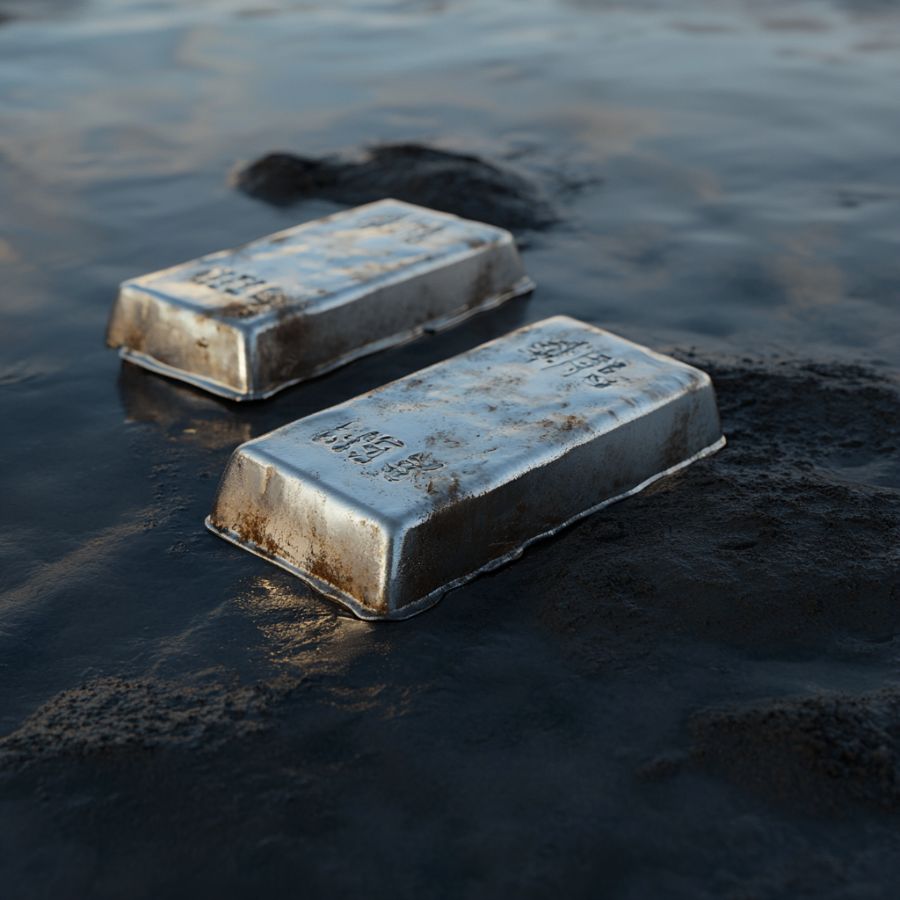
Samuel “Black Sam” Bellamy commanded the Whydah, a slave ship turned pirate vessel. In 1717, he raided ships off New England, collecting gold dust and silver bars.
The Whydah sank in a Cape Cod storm, but Bellamy’s crew may have stopped in Maine weeks earlier.
Fishermen near Machias Bay reported strangers burying crates onshore that spring. Bellamy’s crew used Maine’s foggy inlets to avoid warships.
Modern searches focus on tidal caves where wax-sealed bottles from the 1710s have washed up.
How much the treasure would be worth today
Missing loot from Bellamy’s raids could reach $15 million in today’s market.
The Sunken Warships of Penobscot River – $30,000,000+

In 1779, the American colonies were fighting for independence during the Revolutionary War. British troops captured the Castine Peninsula in Maine, a key spot for controlling trade routes.
Massachusetts sent 44 ships and over 1,000 soldiers to take it back. The fleet included warships like the USS Warren and supply vessels packed with cannons, guns, and ammunition.
Commander Dudley Saltonstall hesitated to attack British ships, causing delays. When British reinforcements arrived, the American forces panicked.
To avoid letting the enemy seize their ships, they set fire to the fleet and sank it in the Penobscot River near present-day Bangor. Cannons, iron tools, and military supplies sank into the muddy riverbed. Some cannons recovered in the 1960s confirm the fleet’s location.
How much the treasure would be worth today
The sunken fleet’s artifacts could total $30 million, especially with intact cannons and Revolutionary War relics.
The Royal Tar’s Circus Gold – $2,000,000+
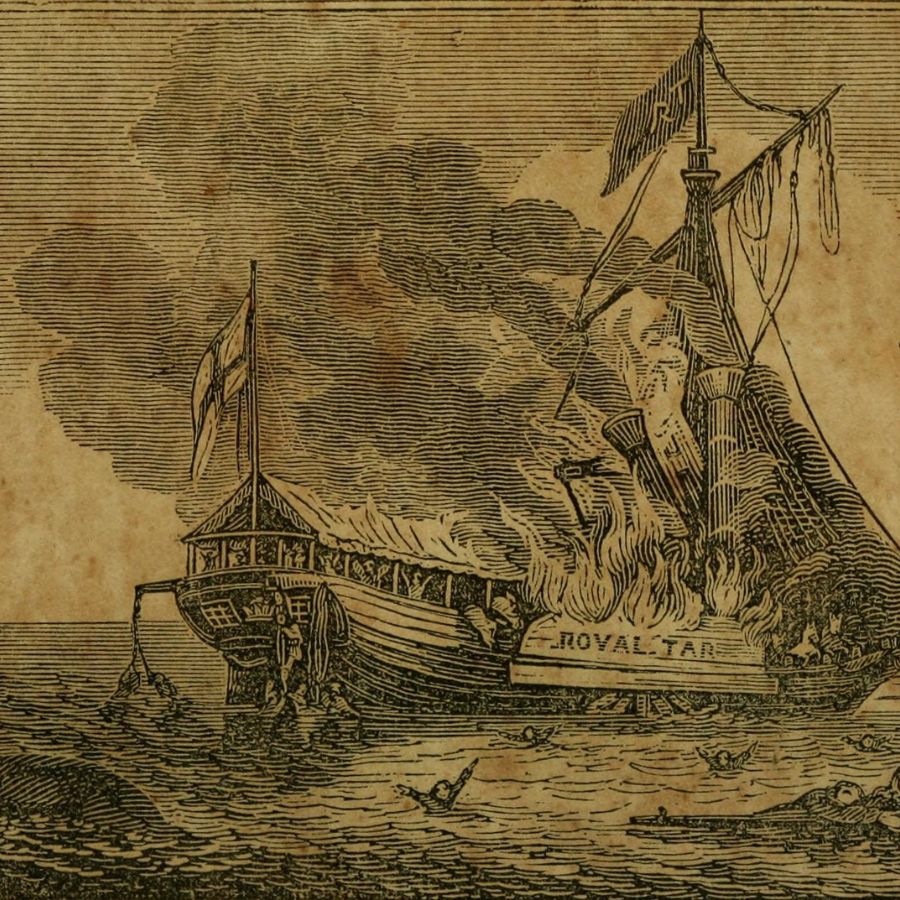
The steamship Royal Tar was built in 1835 to carry passengers between Maine and Canada. In October 1836, it transported the Burgess Circus, including an elephant named Mogul, two camels, and a collection of rare birds. Tickets sold out for weeks, and the circus owner stored profits in the ship’s iron safe.
On October 25, sparks from the engine ignited the wooden deck near Vinalhaven Island. Crew members rescued passengers first, leaving animals and the safe behind.
Survivors saw the elephant drown while trying to swim ashore. The ship sank in 100 feet of water, with the safe holding gold coins from ticket sales and silver from jewelry auctions.
Divers searched Penobscot Bay in the 1990s using sonar but found only broken pottery. Cold water and sand may have preserved the safe’s contents.
How much the treasure would be worth today
The safe’s coins and circus earnings could reach $2 million, adjusted for historic value.
The Norse Coin at Naskeag Point – $1,000,000+
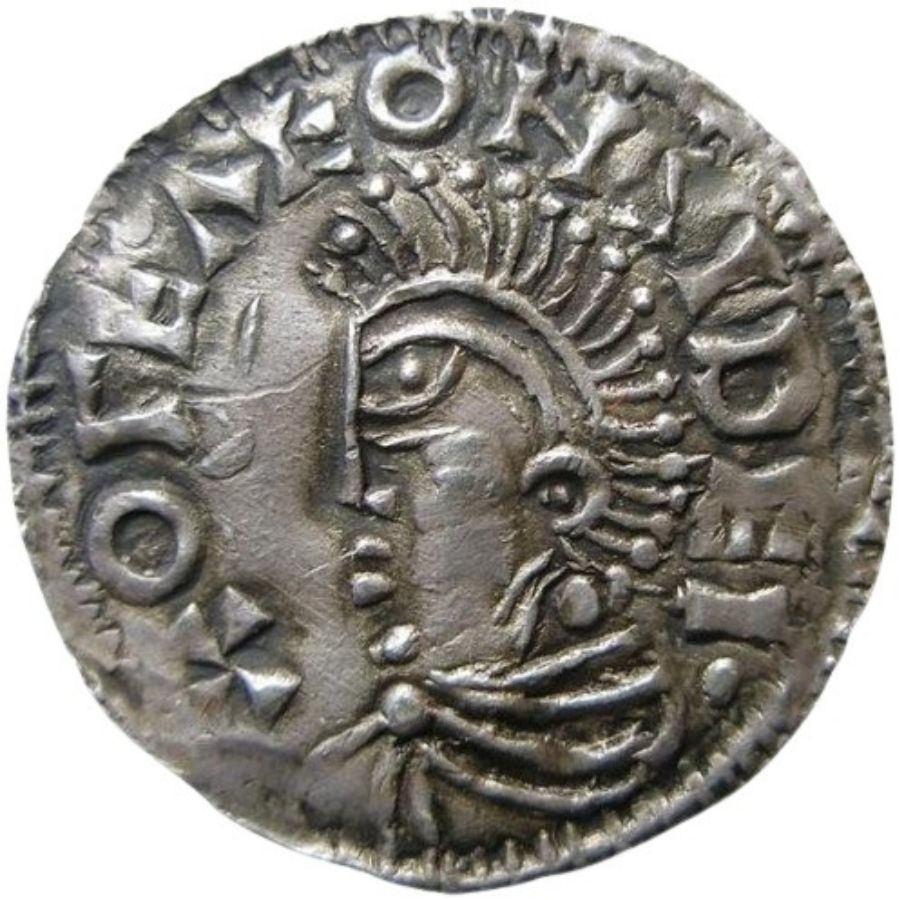
In 1957, a man named Guy Mellgren dug at an old Native American campsite in Brooklin, Maine. His shovel hit a small silver coin with a cross and Viking-style markings. Experts identified it as a Norwegian penny from King Olaf Kyrre’s rule around 1070 AD.
The Goddard Site, where the coin was found, held over 30,000 Native American artifacts like arrowheads and pottery. No other Norse items appeared, but the coin’s hole suggested it was worn as jewelry.
Some think a Norse trader brought it to Maine, while others argue it came from European fishermen centuries later.
Storms and tides have eroded Naskeag Point, hiding clues. Archaeologists still hunt for tools or ship parts to explain the coin’s origin.
How much the treasure would be worth today
The Maine Penny could sell for $500,000, with other undiscovered Norse items adding $1 million.
Molly Ockett’s Silver Secret – $1,500,000+
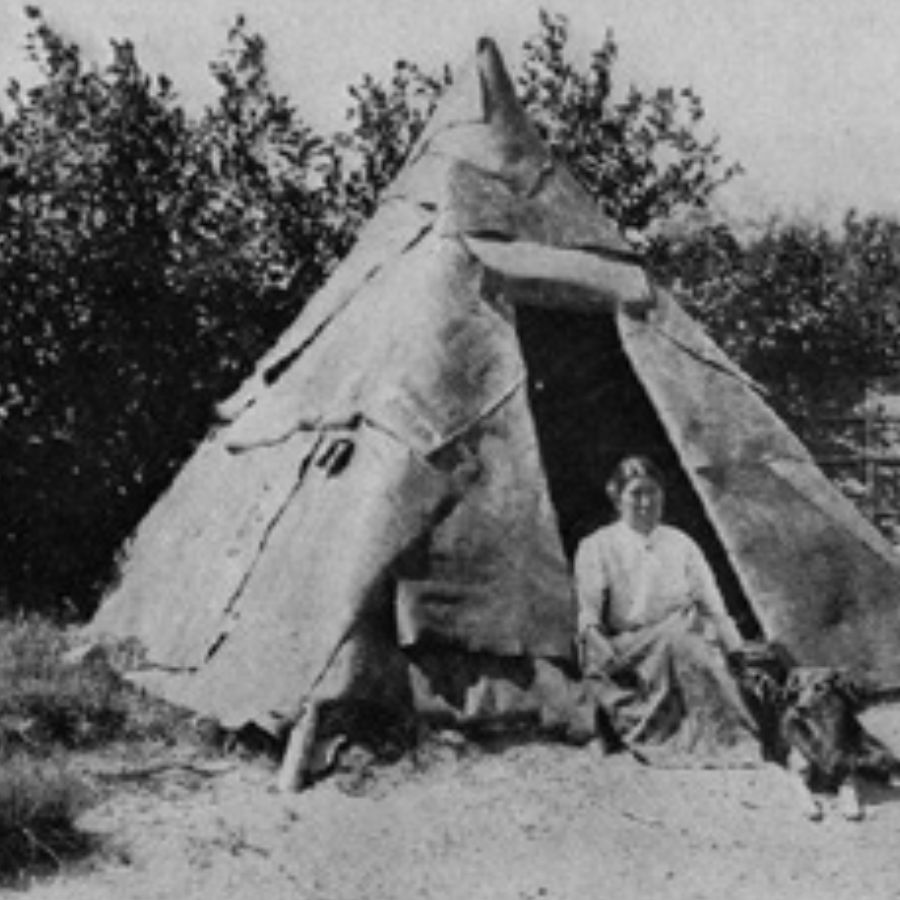
Molly Ockett was born around 1740 in the Pequawket tribe, living in western Maine’s mountains. She became a respected healer, trading herbs and furs with settlers. French explorers paid her with silver coins, which she stored in a kettle.
Settlers in Bethel saw her bury the kettle near two hemlock trees on Hemlock Island in the Androscoggin River. Floods washed away the trees, but locals kept the story alive.
In 1844, a man named Hiram Smith used a dowsing rod to search the island. He claimed to have found the spot but never returned to dig.
The island’s soil has shifted over time, burying the kettle deeper. Metal detectors pick up old nails and tools, but no silver yet.
How much the treasure would be worth today
The kettle’s coins and jewelry might total $1.5 million, based on French colonial silver prices.
Great Chebeague’s Pirate Map – $5,000,000+
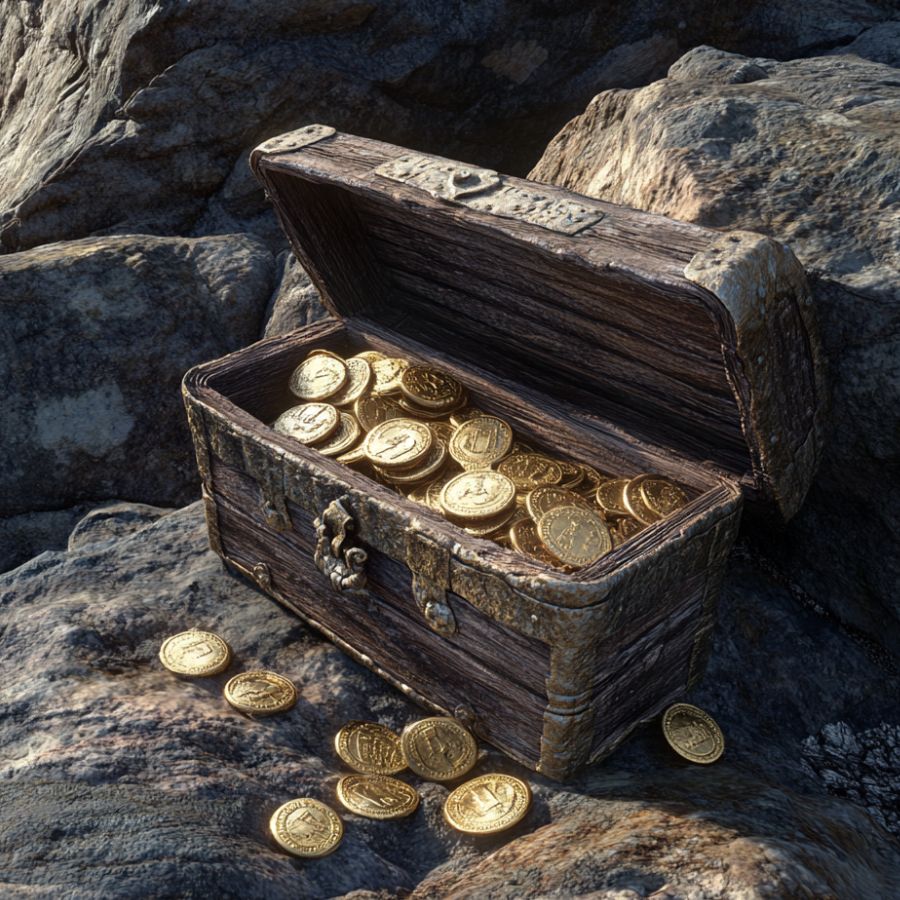
Great Chebeague Island sits in Casco Bay, known for its quiet beaches and tidal pools. In the 1850s, an elderly man arrived with a torn map, digging holes near Deer Point. He told locals he followed clues from a pirate’s diary.
The man fell sick and died before revealing more. Fishermen later found glass bottles from the 1700s in nearby coves. Some bottles had wax seals, like those used by sailors to protect messages.
The island’s eastern shore has rocky ledges matching descriptions of pirate hideouts. Treasure hunters focus on areas where the ground stays dry, perfect for hiding chests.
How much the treasure would be worth today
A pirate chest here could hold $5 million in gold coins and rare artifacts.
Starboard Creek’s Pirate Cache – $1,200,000+
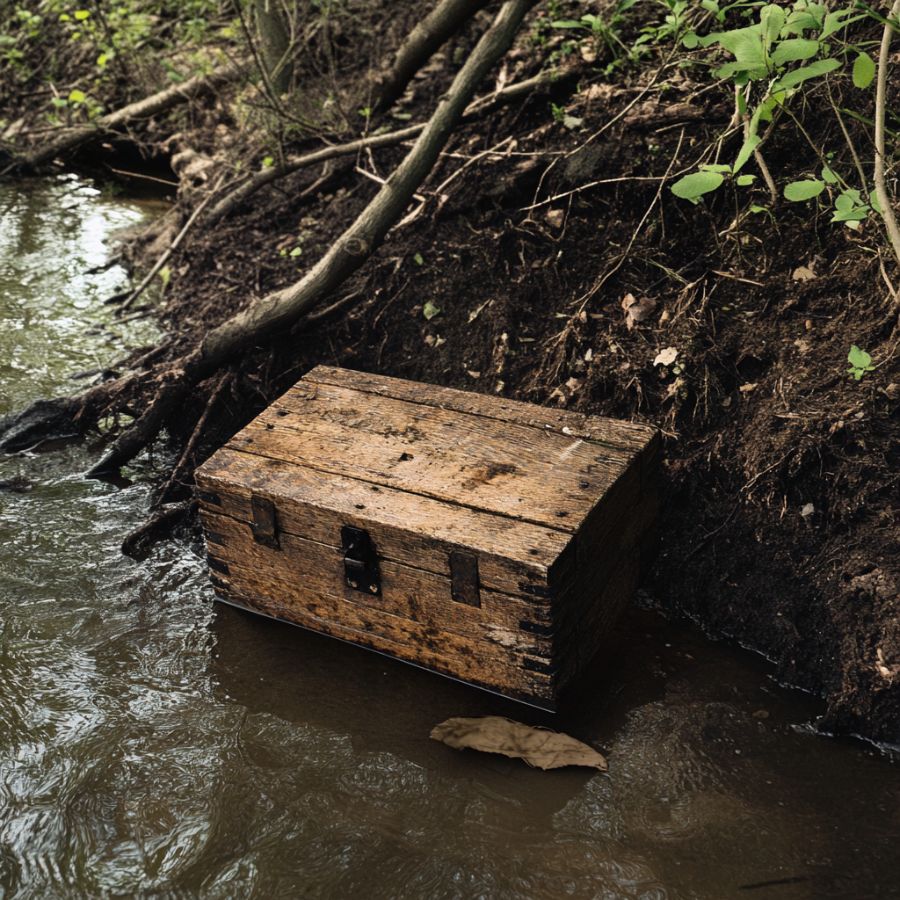
In the early 1700s, pirate James Starbird sailed Maine’s rocky coast, raiding British merchant ships loaded with furs and silver. Starbird partnered with Captain Harry Thompson, a smuggler known for dodging patrols near Machias.
After stealing goods from a Boston-bound ship in 1723, they sailed up the Machias River to hide their loot.
The pair carved symbols like anchors and crossed swords into pine trees along Starboard Creek to mark the spot. Locals found these carvings in the 1890s, sparking digs that turned up rusted shovels but no treasure.
How much the treasure would be worth today
The cache could hold $1.2 million in colonial-era silver and rare furs.
Isles of Shoals’ Pirate Silver – $4,000,000+
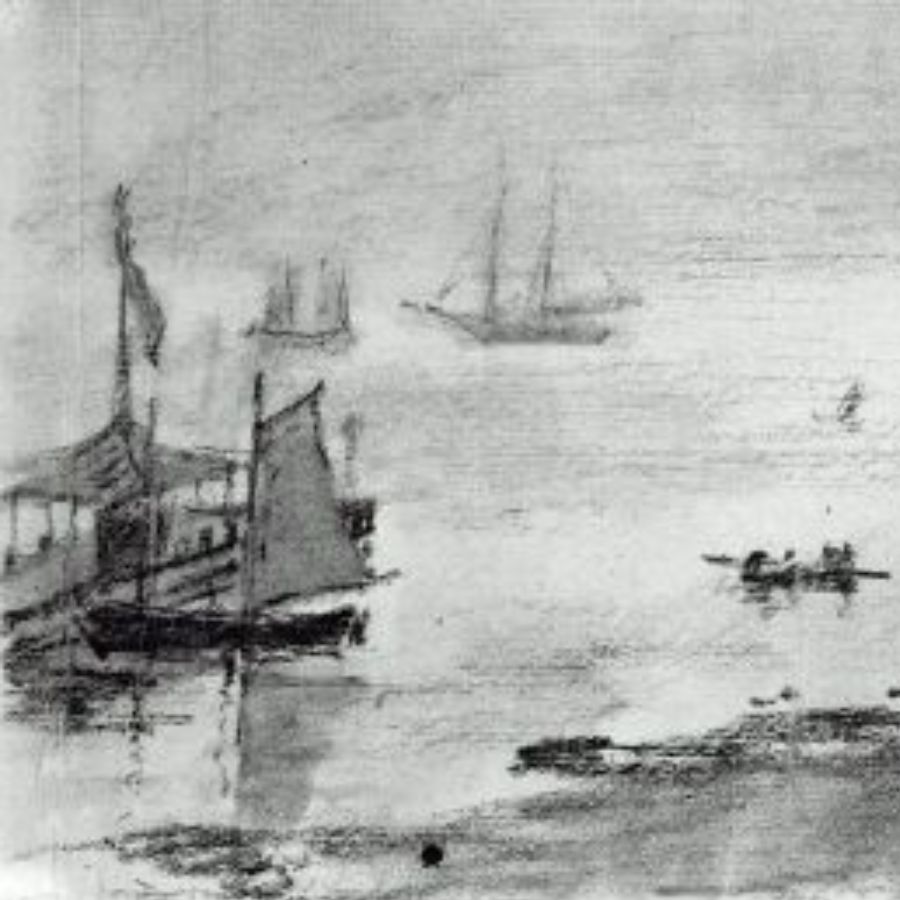
The Isles of Shoals, a rugged island chain off the coasts of Maine and New Hampshire, have long been linked to pirate legends. Some stories claim that outlaw sailors once hid stolen silver among the rocky shores.
One of the most famous legends involves Captain Samuel Haley, who lived on Smuttynose Island in the late 1700s. According to local lore, he discovered four silver bars buried beneath a large rock.
Over the years, fishermen and explorers have reported finding old coins, metal fragments, and pottery around the islands. Some speculate that shipwrecks or hidden caches may still exist beneath the rocky coastline.
How much the treasure would be worth today
Undiscovered Spanish silver bars could total $4 million, based on historic trade values.
The North Woods’ Gold Veins – $8,000,000+
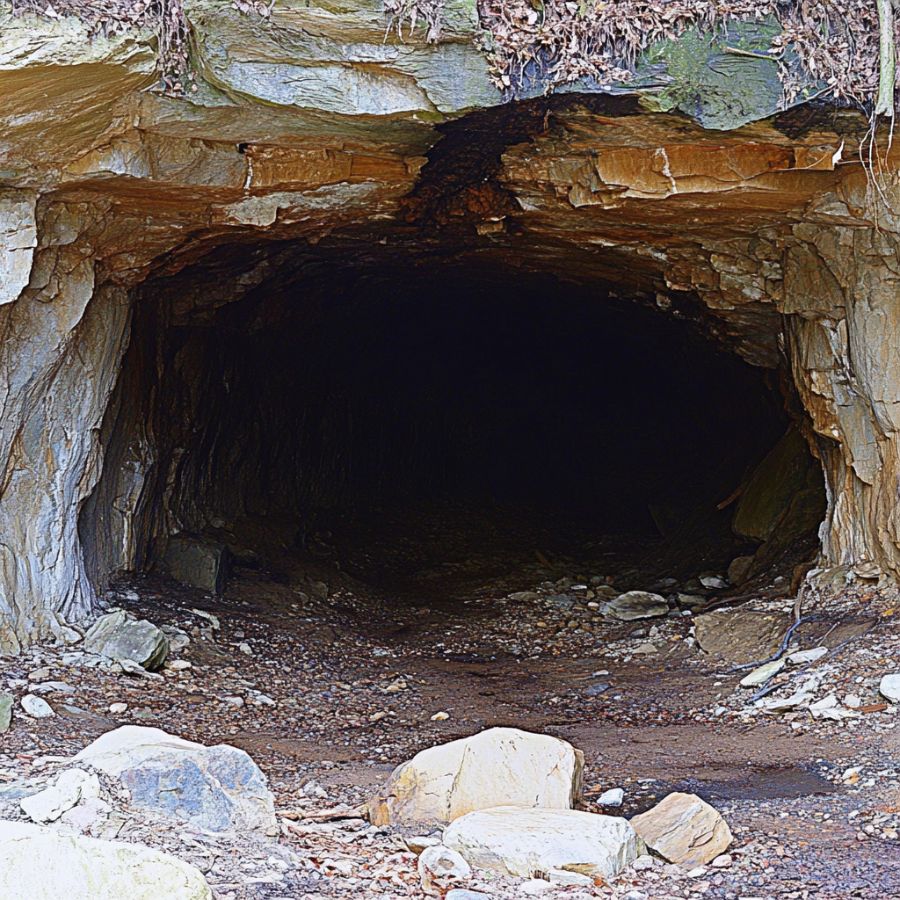
In the mid-1800s, prospectors flocked to Maine’s North Woods, hoping to find gold. They searched rivers and streams, panning for flakes and nuggets. While some found small amounts, major strikes were rare.
One notable discovery was in Madrid, Maine, in 1854. Prospectors found gold in the Swift River and its tributaries. This led to a brief but intense period of mining activity in the area.
Today, enthusiasts still pan for gold in Maine’s streams. The Maine Geological Survey notes that gold occurs in several geologic environments in the state, including in bedrock and stream deposits.
While the dream of striking it rich in Maine’s North Woods has faded, the allure of hidden gold veins continues to captivate adventurers and history enthusiasts alike.
How much the treasure would be worth today
Untapped gold deposits here might reach $8 million using current gold prices.
Captain Quelch’s Missing Gold – $12,000,000+
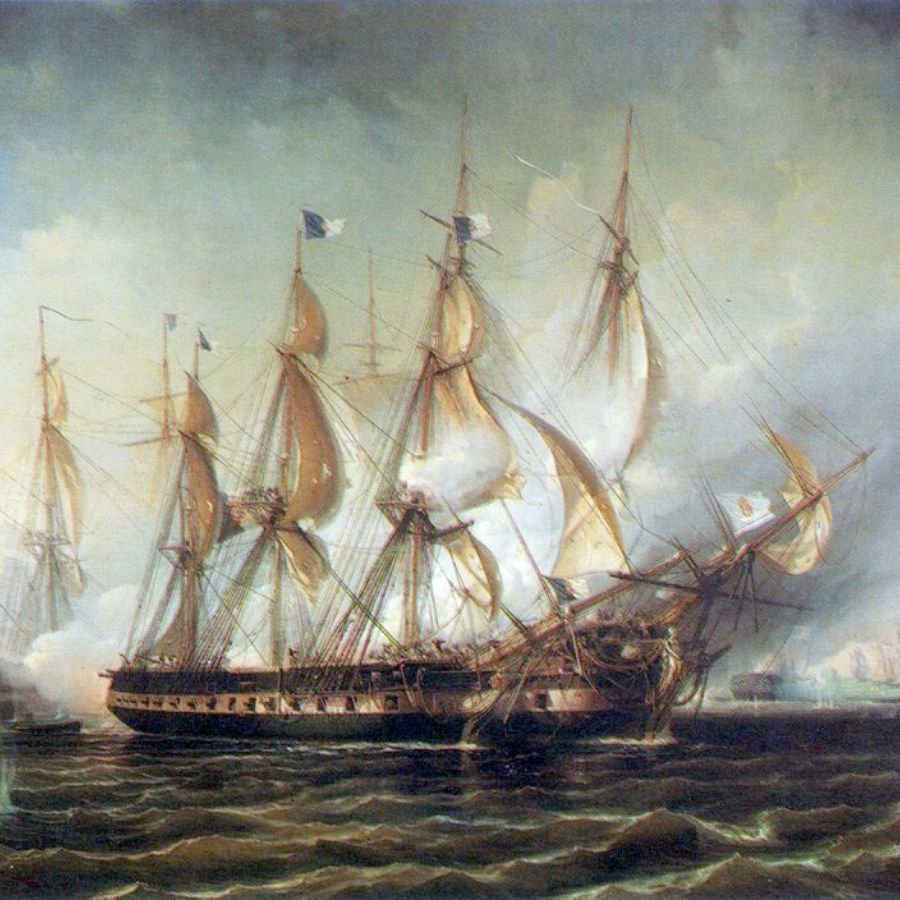
Pirate John Quelch attacked ships in 1703 and stole gold dust, silver, and valuables worth over £10,000 with his crew. In 1704, Governor Joseph Dudley had him arrested and sentenced to death.
Quelch was hanged on June 30, 1704, making him one of the first pirates executed under British law without a jury trial.
Some believe Quelch’s crew hid treasure near the Isles of Shoals. A legend claims that in 1852, a fisherman found old coins in a stone wall on the island, but there is no historical proof of this discovery.
There are stories that his men hid loot on remote parts of Maine’s coast. Tidal pools and rocky cliffs are considered good hiding spots for buried chests.
How much the treasure would be worth today
The lost Portuguese gold could exceed $12 million, adjusted for historic exchange rates.
Mount Desert’s Sunken Spanish Gold – $20,000,000+
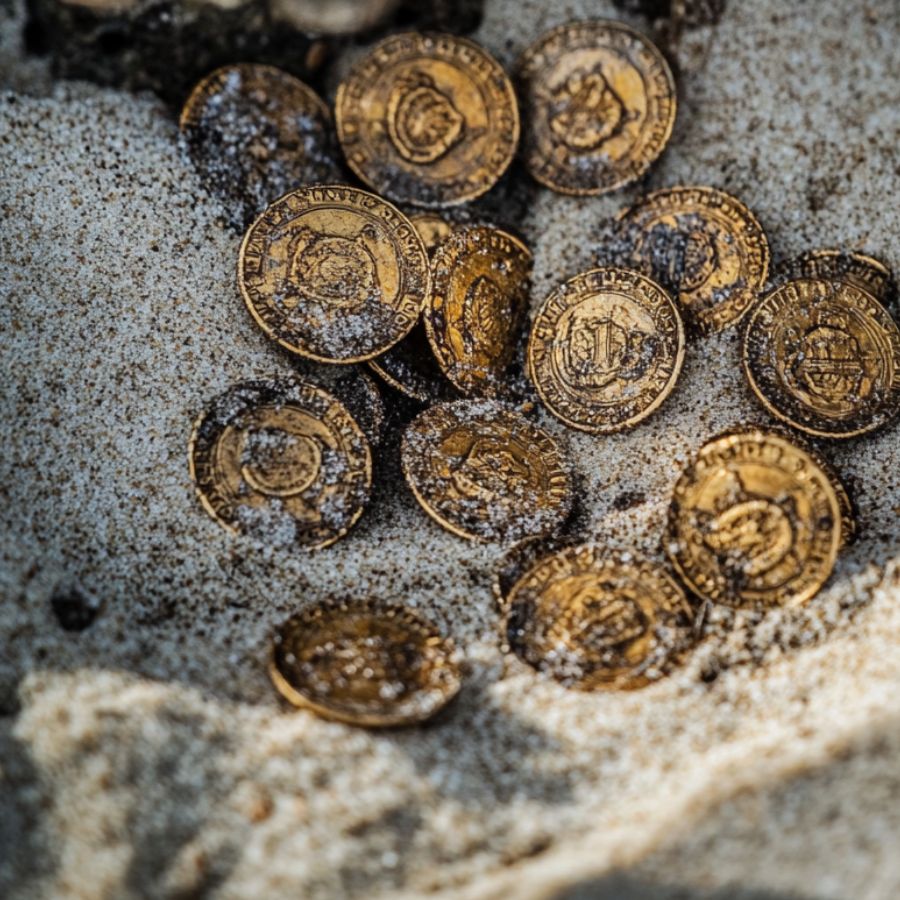
Legends say that a Spanish treasure ship sank near Mount Desert Island off the coast of Maine. The ship was supposedly carrying gold coins and other valuable cargo. Over the years, treasure hunters have searched for it, but no confirmed discovery has been made.
Some believe the ship was part of the Spanish treasure fleet. Others think it was a pirate vessel transporting stolen gold. Stories suggest that storms or enemy attacks led to its sinking.
The treasure could be buried under sand and rocks on the ocean floor. Some reports claim that Spanish coins have washed up on nearby shores. However, no one has found solid proof of a large treasure hoard.
How much the treasure would be worth today
The sunken treasure could total $20 million, based on similar Spanish wrecks.
The Silver Mine of Blue Hill – $5,000,000+
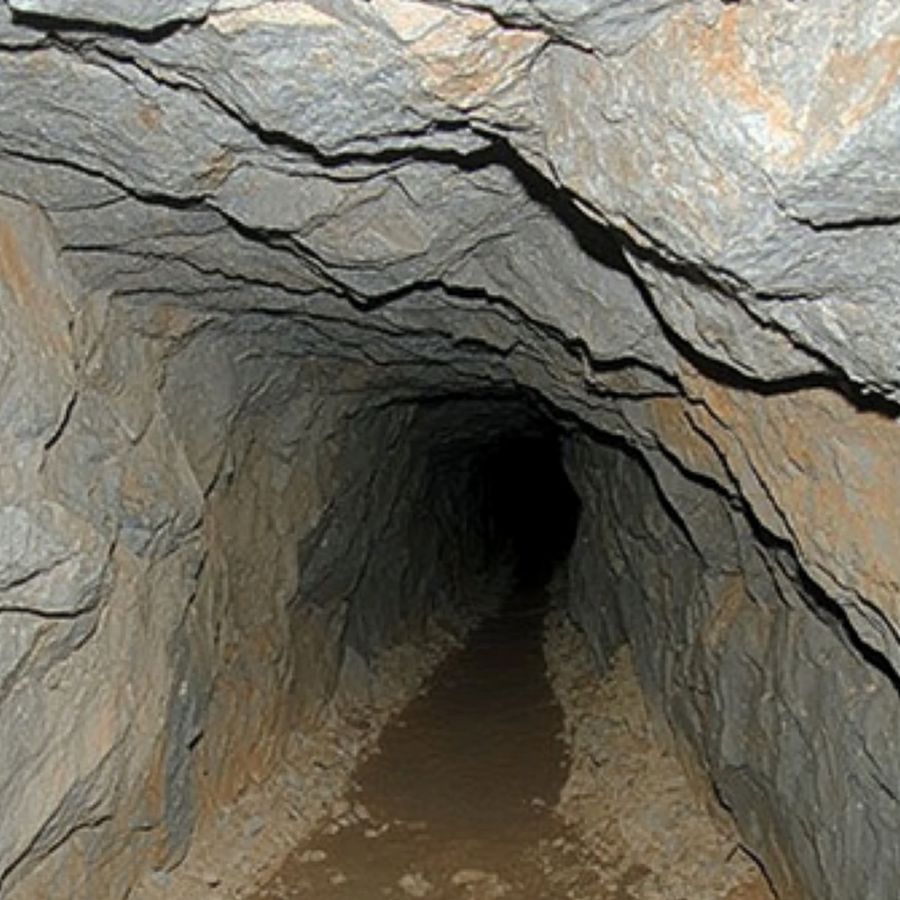
In the 1820s, a farmer named James Smith stumbled upon sparkling rocks in Blue Hill’s dense forests. Tests confirmed the rocks contained silver, sparking a rush. By 1824, investors formed the Blue Hill Mining Company, hiring workers to dig tunnels near present-day Mine Road.
The mine briefly produced silver until flooding and equipment failures shut it down. Locals whispered about a richer vein hidden deeper in the hills, but maps from the era vanished.
In 1965, geologists rediscovered old shafts filled with water, but modern searches face rugged terrain and thick tree cover.
How much the treasure would be worth today
The mine’s untapped silver could exceed $5 million, based on current metal prices and historic records.
The Lost Payroll of the Aroostook War – $2,500,000+
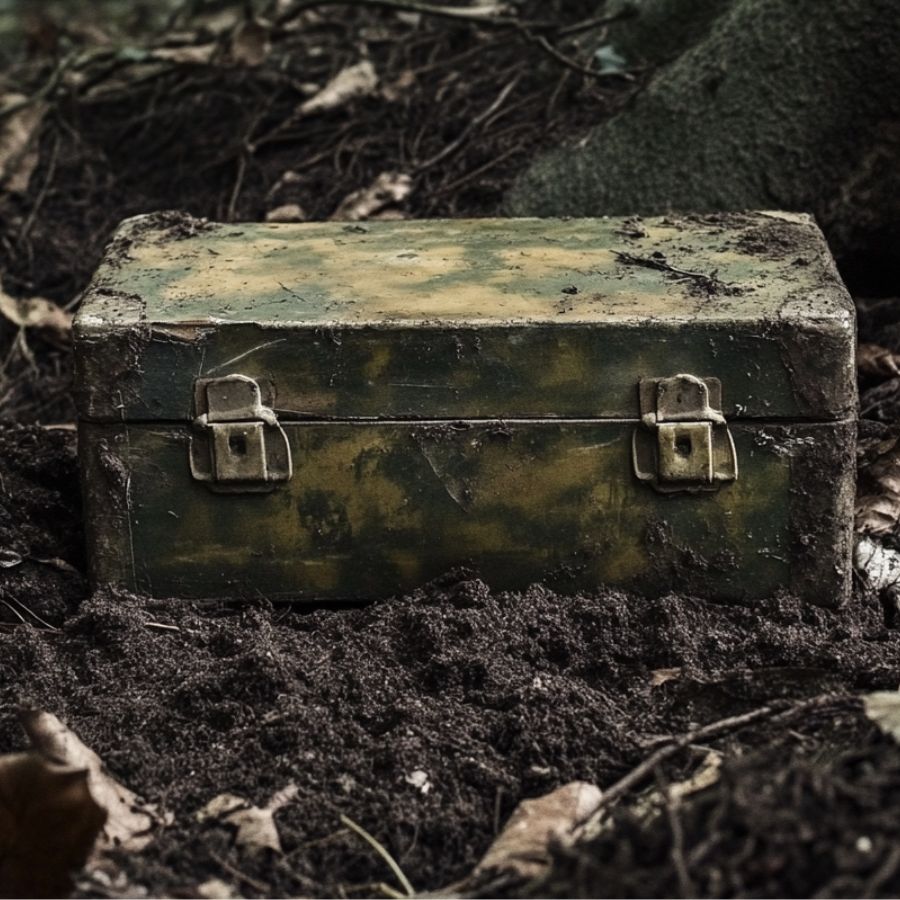
During the 1839 Aroostook War, Major R. M. Kirby prepared a payroll chest with $10,000 in gold coins for militia troops. As tensions spiked, the chest vanished during transport from Bangor to Fort Fairfield. Soldiers searched wagons and trails but found nothing.
Decades later, a diary surfaced claiming a driver hid the chest near a pine grove to avoid British capture. The grove, now part of I-95, was bulldozed in the 1960s.
The chest likely holds 1830s-era U.S. and British coins. Hunters focus on abandoned farmsteads along the old military route, where the driver might have buried it hastily.
How much the treasure would be worth today
The payroll’s gold coins could total $2.5 million.

